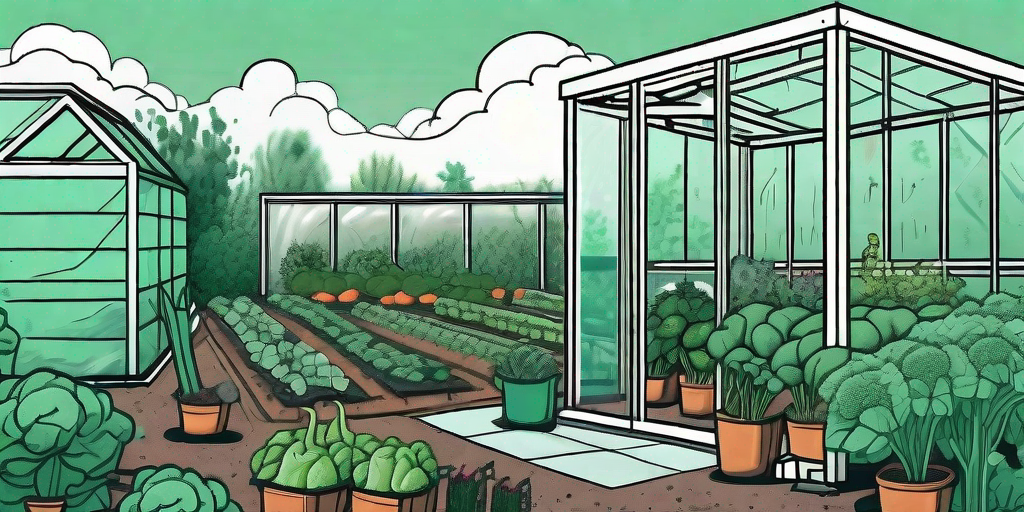
In the event of an apocalypse, you might be thinking about the best ways to survive. Sure, you could stockpile canned goods and bottled water, but why not consider a more sustainable option? Enter the apocalypse-proof garden. This isn't your grandma's vegetable patch, but a robust, resilient garden designed to keep you fed and healthy when the supermarkets are long gone. So, grab your gardening gloves and let's dig into the nitty-gritty of creating your very own survival garden.
Choosing the Right Crops
Not all crops are created equal when it comes to survival. You'll want to choose plants that are hardy, nutrient-dense, and easy to grow. Think potatoes, beans, and kale, not delicate herbs or exotic fruits. Your survival garden is about sustenance, not gourmet dining.
Consider also the climate and soil conditions in your area. Some plants thrive in certain conditions and struggle in others. Do your research and choose crops that are well-suited to your local environment.
Potatoes
Potatoes are a survival garden staple. They're high in calories and nutrients, and they're easy to store over the winter. Plus, they're versatile in the kitchen. Mashed, baked, or fried, potatoes can keep your meals interesting.
Beans
Beans are another excellent choice. They're a great source of protein, which can be hard to come by in a survival situation. Plus, they're easy to grow and store.
Kale
Kale might not be everyone's favorite vegetable, but it's a powerhouse of nutrients. It's also hardy and can survive in colder temperatures, making it a great choice for your survival garden.
Planning Your Garden
Once you've chosen your crops, it's time to plan your garden. Consider factors like sunlight, water access, and pest control. You'll also want to think about crop rotation to keep your soil healthy and productive.
Remember, this isn't a decorative garden. Efficiency and productivity are your goals. So, forget about aesthetic arrangements and focus on maximizing your yield.
Sunlight and Water
Most vegetables need at least six hours of sunlight a day, so choose a spot for your garden that gets plenty of sun. Water is also crucial. Make sure your garden has easy access to a water source, whether it's a nearby stream or a rainwater collection system.
Pest Control
Pests can be a major problem in a survival garden. You won't have access to commercial pesticides, so you'll need to find natural ways to keep pests at bay. Consider companion planting, where certain plants are grown together to deter pests.
Crop Rotation
Crop rotation is a technique used to maintain soil fertility and prevent plant diseases. It involves changing the type of crop grown in a particular area each year. This can help to prevent the build-up of pests and diseases that favor certain crops.
Preserving Your Harvest
Unless you're planning on eating potatoes and beans every day for months on end, you'll need to find ways to preserve your harvest. Canning, drying, and fermenting are all good options.
Remember, preservation isn't just about saving food for later. It's also about maximizing the nutritional value of your crops. So, choose preservation methods that retain as many nutrients as possible.
Canning
Canning is a great way to preserve a variety of foods. It involves sealing food in jars and then heating them to kill any bacteria, yeasts, or molds that could cause the food to spoil. The result is food that can last for years without refrigeration.
Drying
Drying is another simple and effective preservation method. It works best for fruits, herbs, and some vegetables. The key is to remove as much moisture as possible, which prevents the growth of bacteria and molds.
Fermenting
Fermenting not only preserves food but also enhances its nutritional value. It's a process that involves the conversion of sugars and starches into alcohol or acids by yeasts and bacteria. The result is a food that's packed with beneficial probiotics.
Frequently Asked Questions
- What if I don't have a lot of space for a garden?
No problem! Many crops can be grown in containers or vertical gardens. You might not be able to grow as much, but every little bit helps.
- Can I grow fruits in my survival garden?
Yes, but choose hardy fruits that are easy to grow and preserve, like apples or berries.
- What if I don't have a green thumb?
Don't worry, gardening is a skill that can be learned. Start small, do your research, and don't be afraid to make mistakes. You'll get the hang of it in no time.
So there you have it, folks. With a bit of planning and hard work, you can grow your own apocalypse-proof garden. It might not be the most glamorous job in the world, but when the zombies are at your door and you're munching on a homegrown potato, you'll be glad you did it. Happy gardening!











